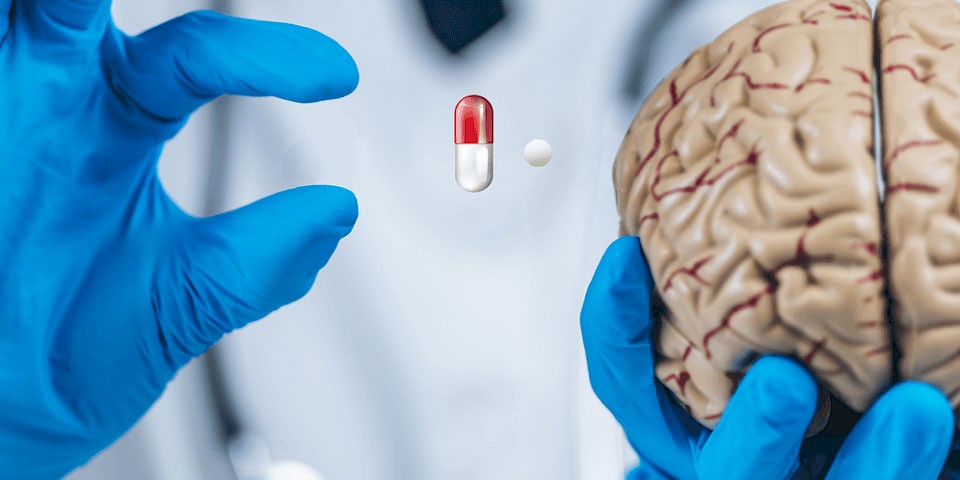Spezifische Arbeiten
[7] Wei H, Zhou L, Zhang H, Chen J, Lu X, Hu L. The Influence of Expectation on Nondeceptive Placebo and Nocebo Effects. Pain Res Manag. 2018 Mar 19;2018:8459429 https://doi.org/10.1155/2018/8459429
[8] Horsfall L. The Nocebo Effect. SAAD Dig. 2016 Jan;32:55-7. PMID: 27145562.
[9] Evans, C. & Richardson, P. (1988, August). IMPROVED RECOVERY AND REDUCED POSTOPERATIVE STAY AFTER THERAPEUTIC SUGGESTIONS DURING GENERAL ANAESTHESIA. The Lancet, 332(8609), 491–493. https://doi.org/10.1016/s0140-6736(88)90131-6
[10] Pollo, A., Amanzio, M., Arslanian, A., Casadio, C., Maggi, G. & Benedetti, F. (2001, July). Response expectancies in placebo analgesia and their clinical relevance. Pain, 93(1), 77–84. https://doi.org/10.1016/s0304-3959(01)00296-2
[11] Blasi, Z. D., Harkness, E., Ernst, E., Georgiou, A. & Kleijnen, J. (2001, March). Influence of context effects on health outcomes: a systematic review. The Lancet, 357(9258), 757–762. https://doi.org/10.1016/s0140-6736(00)04169-6
[12] Swank, D., Swank-Bordewijk, S., Hop, W., van Erp, W., Janssen, I., Bonjer, H. & Jeekel, J. (2003, April). Laparoscopic adhesiolysis in patients with chronic abdominal pain: a blinded randomised controlled multi-centre trial. The Lancet, 361(9365), 1247–1251. https://doi.org/10.1016/s0140-6736(03)12979-0
[13] Kaptchuk, T. J., Friedlander, E., Kelley, J. M., Sanchez, M. N., Kokkotou, E., Singer, J. P., Kowalczykowski, M., Miller, F. G., Kirsch, I. & Lembo, A. J. (2010, 22. December). Placebos without Deception: A Randomized Controlled Trial in Irritable Bowel Syndrome. PLoS ONE, 5(12), e15591. https://doi.org/10.1371/journal.pone.0015591
[14] Preston, R. A., Materson, B. J., Reda, D. J. & Williams, D. W. (2000, 22. May). Placebo-Associated Blood Pressure Response and Adverse Effects in the Treatment of Hypertension. Archives of Internal Medicine, 160(10), 1449. https://doi.org/10.1001/archinte.160.10.1449
[15] Hróbjartsson, A. & Gøtzsche, P. C. (2001, 24. May). Is the Placebo Powerless? New England Journal of Medicine, 344(21), 1594–1602. https://doi.org/10.1056/nejm200105243442106
[16] Price, D. D., Finniss, D. G. & Benedetti, F. (2008, 1. January). A Comprehensive Review of the Placebo Effect: Recent Advances and Current Thought. Annual Review of Psychology, 59(1), 565–590. https://doi.org/10.1146/annurev.psych.59.113006.095941
[17] Benedetti, F. (2006, May). Placebo analgesia. Neurological Sciences, 27(S2), s100–s102. https://doi.org/10.1007/s10072-006-0580-4
[18] Wechsler, M. E., Kelley, J. M., Boyd, I. O., Dutile, S., Marigowda, G., Kirsch, I., Israel, E. & Kaptchuk, T. J. (2011, 14. July). Active Albuterol or Placebo, Sham Acupuncture, or No Intervention in Asthma. New England Journal of Medicine, 365(2), 119–126. https://doi.org/10.1056/nejmoa1103319
[19] Furby, L. (1973, Februar). Interpreting regression toward the mean in developmental research. Developmental Psychology, 8(2), 172–179. https://doi.org/10.1037/h0034145[21] Nachtigall C., Suhl U. (2002). Der Regressionseffekt Mythos und Wirklichkeit. methevalreport. Psychologische Methodenlehre und Evaluationsforschung am Institut für Psychologie der Friedrich-Schiller-Universität Jena. retrieved 12.10.2022 from https://www.metheval.uni-jena.de/materialien/reports/report_2002_02.pdf
All papers mentioned in this document are listed. The archive contains these and possibly other papers.

